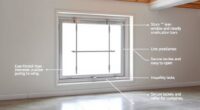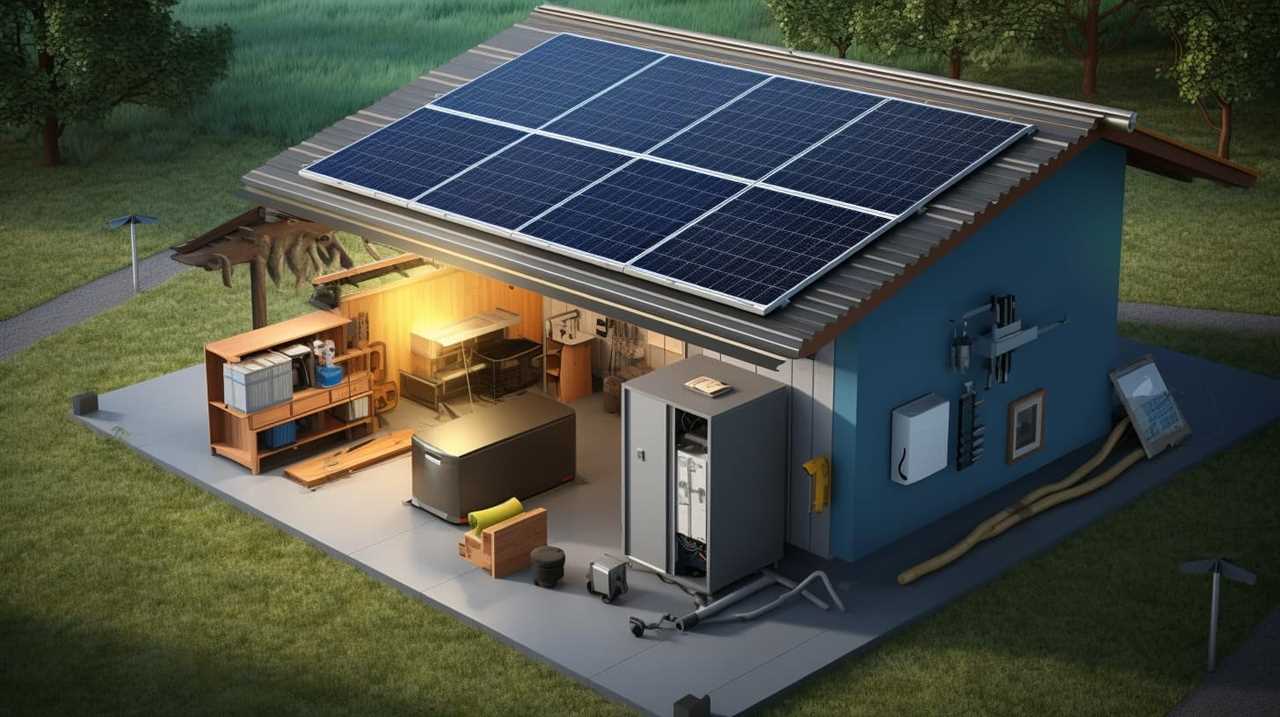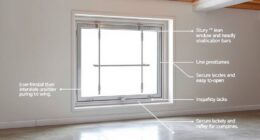Many assume that tiny houses can’t withstand hurricanes, but with proper engineering, they can be surprisingly resilient. The key lies in how you design, reinforce, and anchor your structure to handle extreme winds and debris. While no house is completely hurricane-proof, understanding the right materials and techniques can make a significant difference. Curious about what specific strategies can help your tiny house endure a storm of this magnitude?
Key Takeaways
- Properly reinforced framing and impact-resistant windows enhance a tiny house’s ability to withstand hurricane-force winds.
- Secure anchoring using heavy-duty anchors and steel straps prevents uprooting and sliding during storms.
- Using hurricane-grade sheathing and impact-resistant materials improves resilience against debris and high winds.
- No tiny house is entirely hurricane-proof, but proactive reinforcement and design can significantly increase survival chances.
- Combining storm-resistant design features with effective anchoring is essential for maximizing hurricane resilience in tiny homes.

Can a tiny house withstand a hurricane? It’s a question many people ask when considering the safety and durability of these compact homes in severe weather conditions. The truth is, whether a tiny house can survive a hurricane depends largely on its design and how well it’s built to handle high winds and flying debris. Storm resistant design and proper anchoring techniques are essential elements that can make a big difference. Tiny houses are inherently more vulnerable to storm damage because of their small size and lightweight materials, but with strategic planning, you can greatly improve their resilience.
Storm resistant design involves more than just choosing durable materials; it’s about shaping the entire structure to withstand hurricane forces. Reinforced framing, impact-resistant windows, and secure roofing are vital components. These features help prevent the house from collapsing or suffering severe damage during strong winds. For example, using metal or impact-resistant glass reduces the risk of shattering, while reinforced walls with hurricane-grade sheathing strengthen the overall structure. Every element should be selected with wind resistance in mind, ensuring the tiny house can better absorb or deflect the force of a hurricane. Additionally, understanding storm-resistant building techniques can significantly enhance your home’s durability.
Reinforced framing and impact-resistant windows strengthen tiny houses against hurricane damage.
Equally important are anchoring techniques. Because tiny houses are often mobile or built on trailers, they need a solid anchoring system to prevent them from being uprooted by hurricane winds. Proper anchoring involves more than just tying the house down; it requires a combination of heavy-duty anchors, such as ground screws or concrete piers, and steel straps or cables that secure the house to these anchors. You want to distribute the force of the wind evenly and prevent uplift or sliding. When installed correctly, anchoring techniques help keep your tiny house grounded, reducing the risk of it becoming a dangerous projectile during a storm.
While no home can be completely hurricane-proof, adopting a storm resistant design and implementing effective anchoring techniques greatly enhances your tiny house’s chances of survival. It’s about preparing ahead of time and investing in quality materials that can take the storm’s punch. Reinforcing vulnerable areas, choosing impact-resistant features, and securely anchoring your tiny house are all steps you can take to improve its resilience. Keep in mind, also, that local building codes and guidelines for hurricane-prone areas can provide useful standards to follow, helping you make informed decisions. With thoughtful planning and proper construction methods, your tiny house can be more than just a cozy retreat—it can stand strong against nature’s fiercest storms.
Conclusion
With the right engineering, your tiny house can stand up to a hurricane like a sturdy ship battling stormy seas. Reinforced framing, impact-resistant windows, and secure anchoring are your best tools to minimize damage and stay safe. While nothing’s completely hurricane-proof, combining these strategies boosts your home’s resilience. So, with proper preparation, you can face the storm head-on, knowing your tiny house is as prepared as a fortress ready to weather the fiercest winds.
Hi, I’m Emma. I’m the Editor in Chief of Tiny House 43, a blog all about tiny houses. While tree houses are often associated with childhood, they can be the perfect adult retreat. They offer a cozy space to relax and unwind, surrounded by nature. And since they’re typically built on stilts or raised platforms, they offer stunning views that traditional homes simply can’t match. If you’re looking for a unique and romantic getaway, a tree house tiny house might just be the perfect option.










